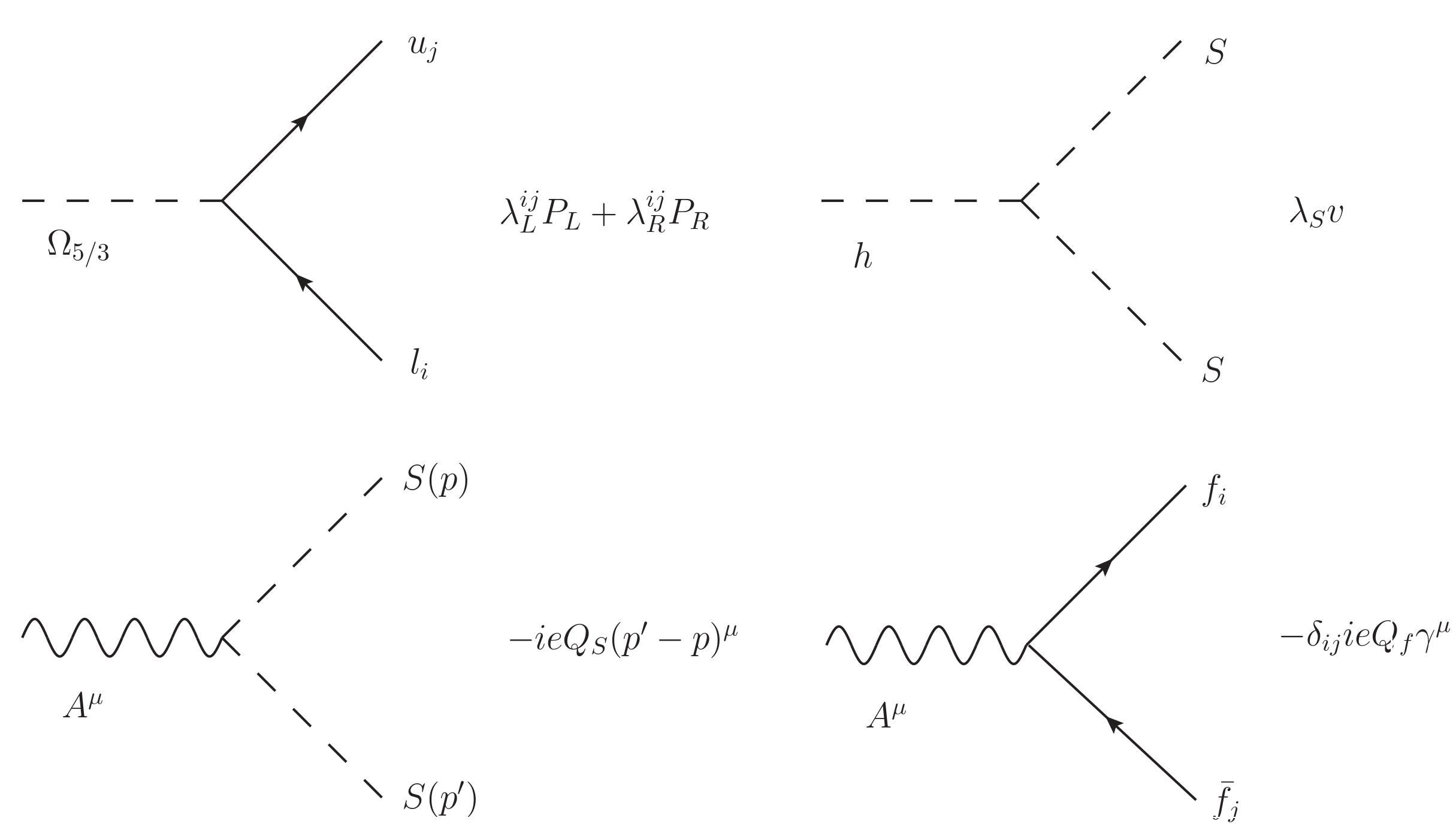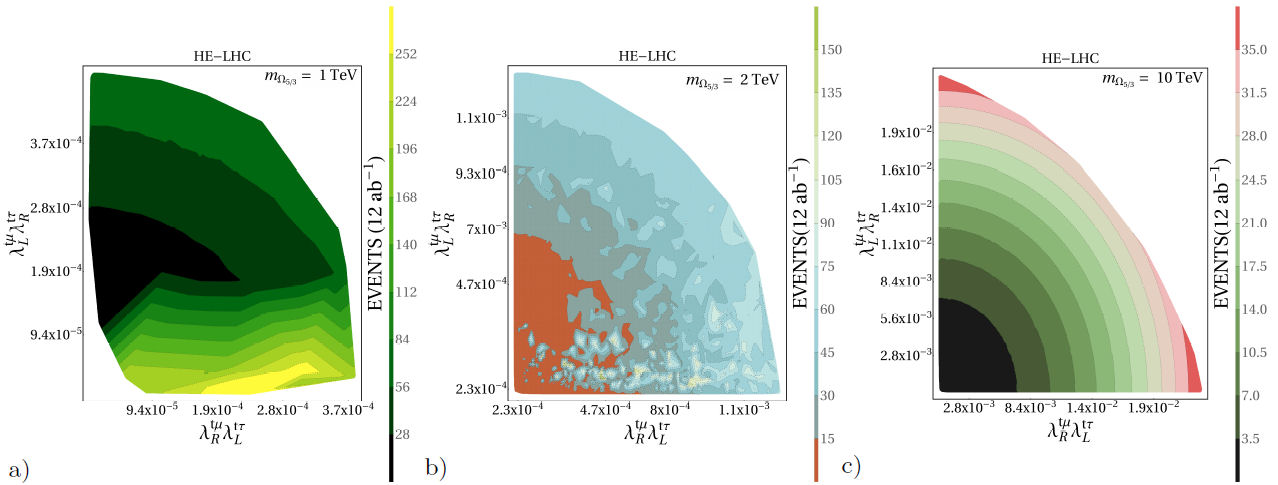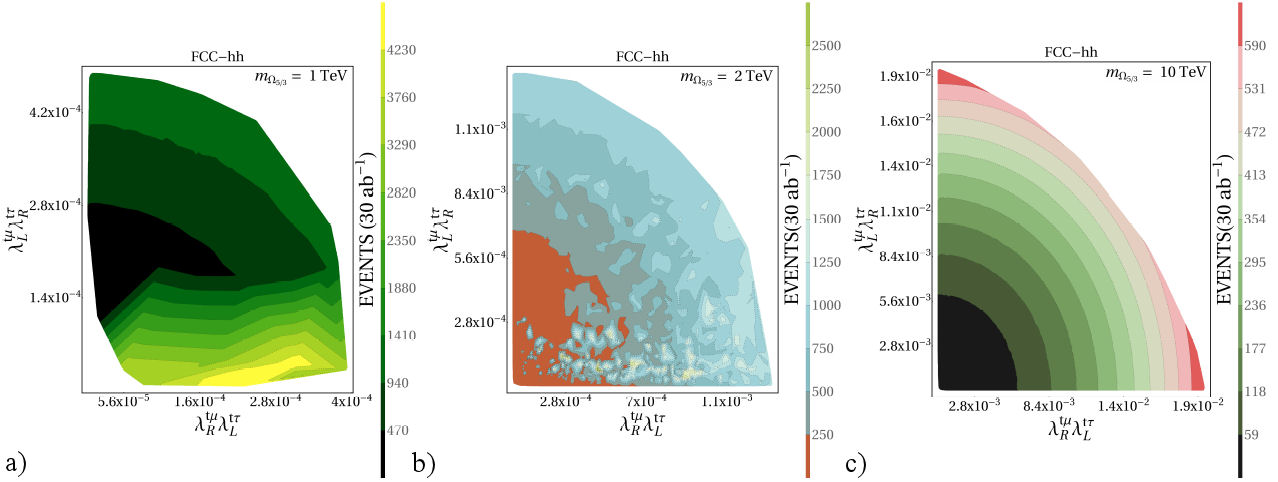1. Introduction
Once the Higgs boson was discovered at LHC by ATLAS and CMS collaborations [1, 2],
several phenomenological studies on Higgs physics were proposed, from high precision
experiments to processes that would indicate physics beyond the Standard Model (SM).
In this context, nonstandard Higgs couplings, including the Lepton Flavor Violating
(LFV) ones, are predicted by many models of physics beyond SM [3-8]. In particular,
neutrino oscillations are a consequence of their massive nature, which is not
addressed by the SM. The experiments with atmospheric, solar, reactor and
accelerator neutrinos have provided evidence of this phenomenon [9-16],
which motivated the occurrence of LFV in nature. In the framework of the SM, LFV
processes vanish at any order of perturbation theory, which encourages the study of
SM extensions that predict sizable LFV effects that could be at the reach of
detection. In addition to decays as
Searches for the LFV decay h → τµ carried out by CMS and ATLAS collaborations in the τµ and eτ channels were presented. However, no significant excess over the SM expectation was observed [29, 30]. The upper limits, at 95% confidence level, are:
With these encouraging values, searches for the LFV decay h → τµ look promising with luminosities and energies larger than the one searched at the Large Hadron Collider (LHC). This could be achieved at future super hadron colliders, namely, High Luminosity LHC (HL-LHC) [31], High Energy LHC (HE-LHC) [32], and at Future hadron-hadron Circular Collider (FCC-hh) [33], which will reach an integrated luminosity of up to 3 ab−1, 12 ab−1 and 30 ab−1 and center-of-mass energies of 14, 27 and 100 TeV, respectively.
In our research, we study the decay h → τµ in the framework of a specific version of Leptoquark (LQ) models, as presented below. LQs can be scalar or vector particles that simultaneously carry lepton and baryon number and can appear naturally in grand unified theories based on SO(10) [34,35], SU(5) [36] and SU(6) [37], as well as in the context of a SU(4) R ×SU(4) L ×SU(40) theory, where the lepton number is considered as a fourth color [38, 39]. These particles also appear in other extensions of SM, such as Technicolor [40,41], supersymmetric models with R-parity violation [42], models with composite fermions [43-45], etc. The LQs may or may not have well-defined baryon (B) and lepton (L) number; however, those with violating interactions can mediate the proton decay unless an extra symmetry is invoked to forbid the diquark couplings, otherwise the leptoquark masses are expected to be at the Planck scale to ensure the stability of the proton [46]. The low-energy LQ phenomenology has received considerable attention, and possible LQ manifestation in various processes has been extensively investigated [47-49]. The LQs with left and righthanded couplings to fermions are interesting candidates to explain the discrepancy of the muon anomalous magnetic moment (µAMDM) since they induce an enhancement by a factor m t /m µ ∼ O(103) or m b /m µ ∼ O(10) compared to the SM. Furthermore, the non-chiral LQs interactions can enhance as well the rare LFV Higgs boson decay h → τµ.
The spirit of our work was essentially studied also in the Refs. [48,50,51], whose branching ratios
The organization of our work is as follows. In Sec. 2, we briefly discuss the generalities of the LQ model that we are interested in Sec. 3. There is devoted on the constraints on the relevant model parameter space whose values will be used in our analysis. Section 4 is focused on the calculation of the LFV decay h → τµ amplitudes and decay width. In addition, we present the number of signal and background events produced at LHC, HL-LHC, HE-LHC, and FCC-hh. Finally, conclusions and outlook are presented in Sec. 5.
2. Theoretical framework
It is quite feasible to study the low-energy leptoquark phenomenology in a
model-independent way via an effective Lagrangian, under the assumption of
renormalizability and SM gauge invariance. Deeper analysis about the most general
effective interactions of scalars and vector LQs can be found in [46,54].
We focus on a simple renormalizable LQ model, where a SU(2) doublet
R
2 with quantum numbers
(3,2,7/6) is added to the SM.
With this unique representation, it is not necessary to implement additional
symmetries that forbid the proton decay since R
2 does not couple to a pair of quarks. After the electroweak symmetry
breaking, two LQs with fractional electric charges
2/3e and
5/3e appear, where the latter has non-chiral
interactions to fermions; therefore, its contribution can improve the branching
ratio of the LFV Higgs boson decay
The symmetries of SU(3) C ×SU(2) L ×U(1) Y allow the following zero-fermion-number interactions of the LQ doublet R 2 [54]
where F = 3B+L is the fermion
number,
After rotating to the LQ mass eigenstates Ω 2/3 and Ω 5/3 (where the indices refer to the electric charge of the two leptoquark states) via an unitary rotation, we obtain the leptoquark couplings to a quark-lepton pair
where P
L,R
are the chiral projection operators. Since the flavor eigenstates were
rotated to the mass eigenstates, the couplings
The leptoquark coupling to the photon, which is necessary for the calculations of the µAMDM and the LFV decay τ → µγ, can be extracted from the leptoquark kinetic Lagrangian
where
where
where we denote the dimensionless coupling associated with the Higgs-LQ interaction term as λ Ω.
All the Feynman rules obtained from the previous Lagrangians are required for our calculations and can be consulted in Fig. 1.
3. Constraints on the parameter space of the scalar LQ model
We now turn to the analysis of the parameter space for the LQ model previously introduced. We first start with a brief discussion about the constraints on the mass of the LQ and its coupling to the Higgs boson. Regarding the LQ coupling to fermions, we employ the µAMDM to constrain the LQ coupling to a µ-quark pair and the LFV decay τ → µγ to constrain the τ-quark ones. It turns out that low energy processes strongly constrain the couplings to the first-generation fermions while over the second and third-generations are less restricted.
Constraints on the mass for the LQs have been obtained by the ATLAS [56] and CMS [57] collaborations from the LHC data at
3.1. Constraints from the muon anomalous magnetic dipole moment and the LFV decay τ → µγ
The discrepancy between the theoretical and experimental values of the
µAMDM has been a long-standing unsolved problem within the
SM framework. On the theoretical side, the update SM theoretical prediction was
reported in Ref. [60], whose value is
that could be explained by the existence of new physics. In this work, we consider the leptoquark Ω 5/3 contribution as an explanation for the µAMDM. As pointed out before, the LQ mass must be rather heavy due to the LHC constraints; however, one can still get sizable effects in the µAMDM since the amplitude can be enhanced by the factor m t /m µ compared to the SM. As for the chiral leptoquark Ω 2/3 , its contribution to a µ is proportional to the muon mass and therefore subdominant. The scalar leptoquark Ω 5/3 induces the µAMDM at one-loop level via the Feynman diagrams of Fig. 2 for f i = f j = µ. Then, the contribution to a µ from LQ can be written as:
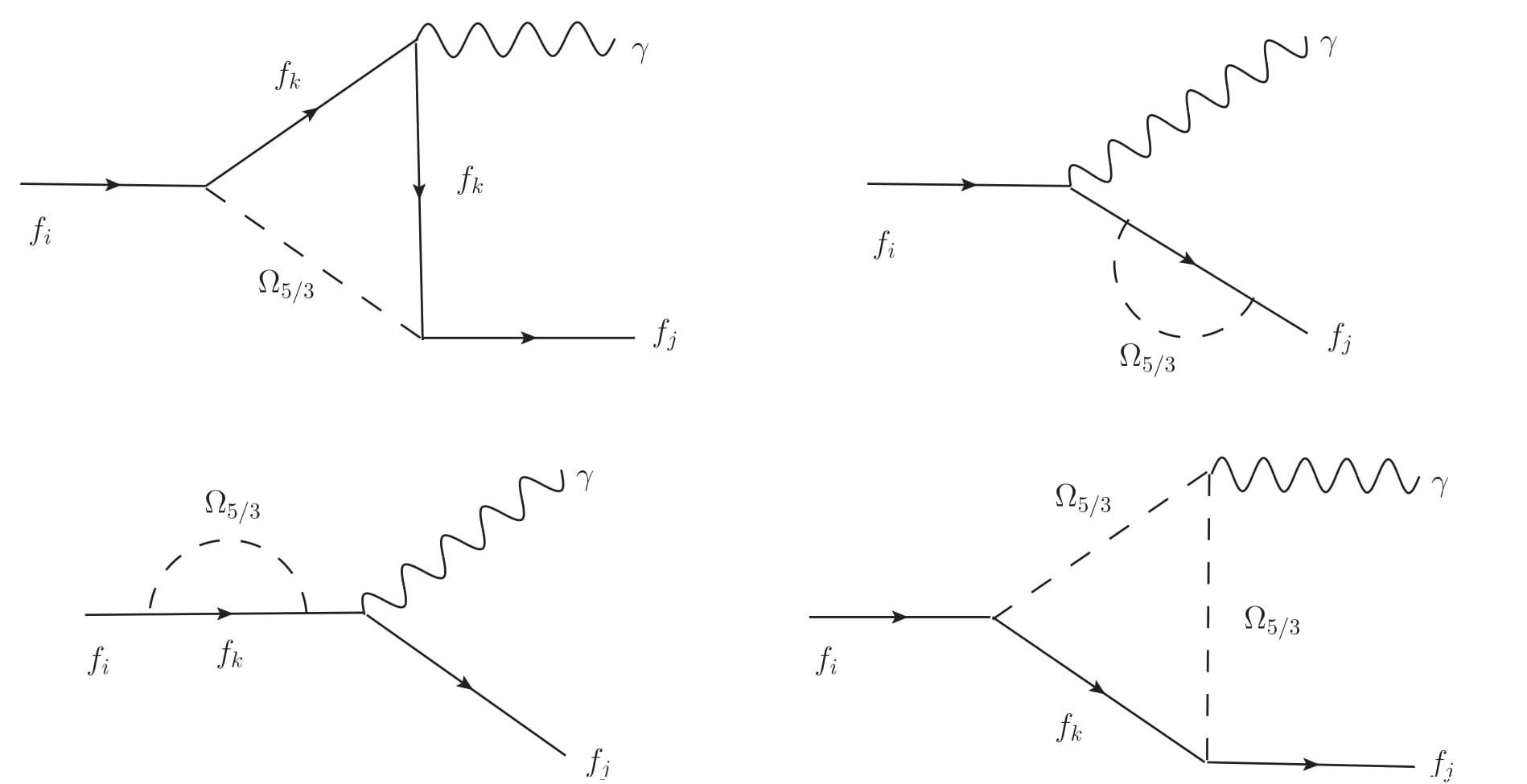
FIGURE 2 Feynman diagrams that contribute to the decay f i → f j γ in the leptoquark model, where f i and f j can be leptons (quarks) if the internal fermion f k is a quark (lepton). The Ω 5/3 represents the leptoquark with electric charge 5/3 in units of the elemental charge e. Similar diagrams contribute to the µAMDM, only the replacement f i = f j = µ must be done.
where N
c
is the color number of the internal fermion and
As for the constraints of the LFV processes, the experimental bound
The decay width for the process f i → f j γ can be written as
where form factors L and R are presented in Appendix B.
In order to explore the allowed values for the couplings
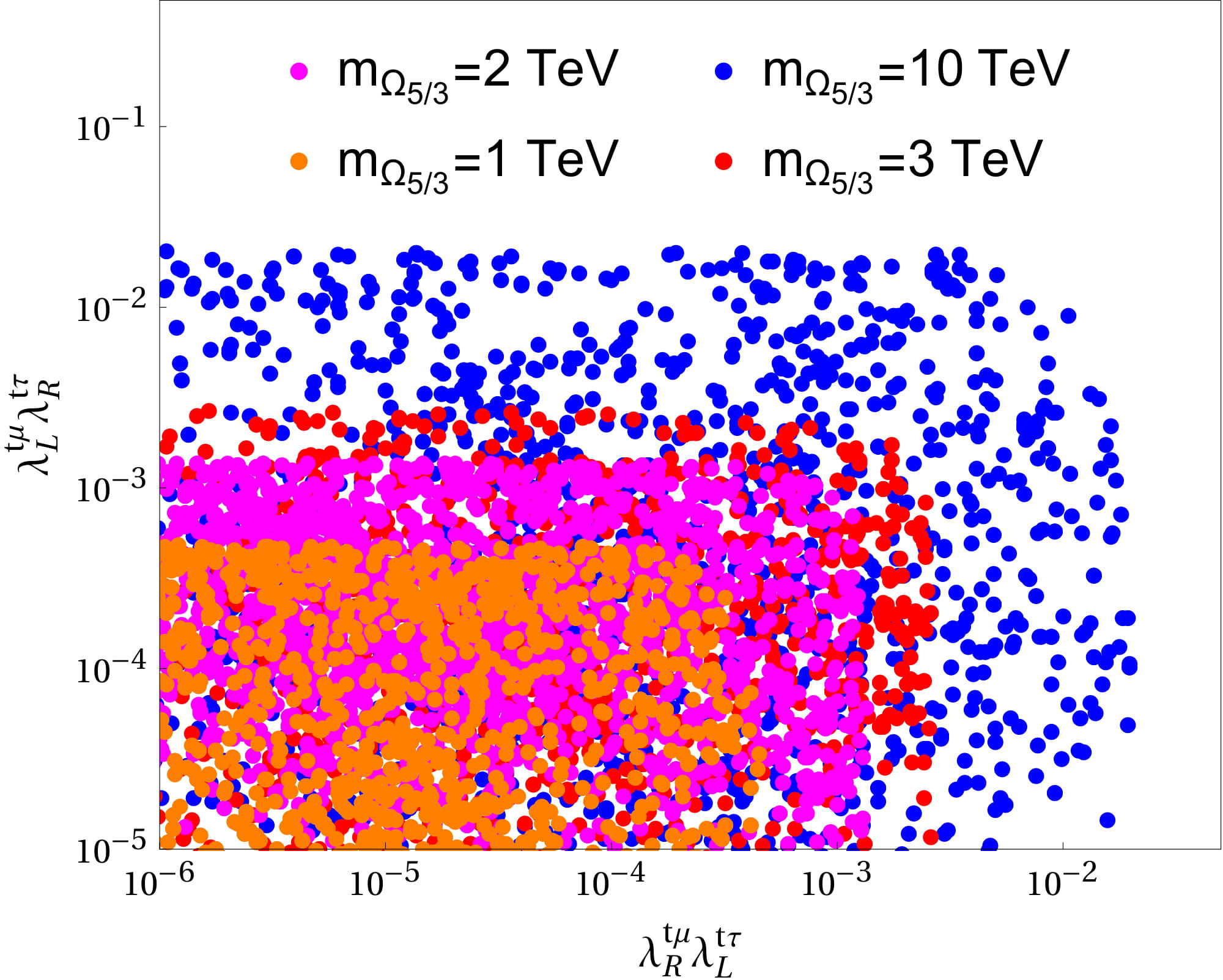
FIGURE 3 Allowed region in the
As far as the electron AMDM is concerned, the most current measurement of the fine structure constant α −1 = 137.035999206(11) [63] differs by 5.4 σ from cesium recoil measurement [64]. While the former is in agreement with the SM, the latter seems to point to a slight tension corresponding to a factor of 2.5. This controversy needs to be settled before concluding on the possible new physics BSM.
Given the above, it is worth mentioning that this model can simultaneously
explain both the δa
e
(considering the result reported in Ref. [64]) and δα
µ
as well as the bounds on the BR of both
µ → eγ and h →
µe. For illustration, we present in Fig. 4 the
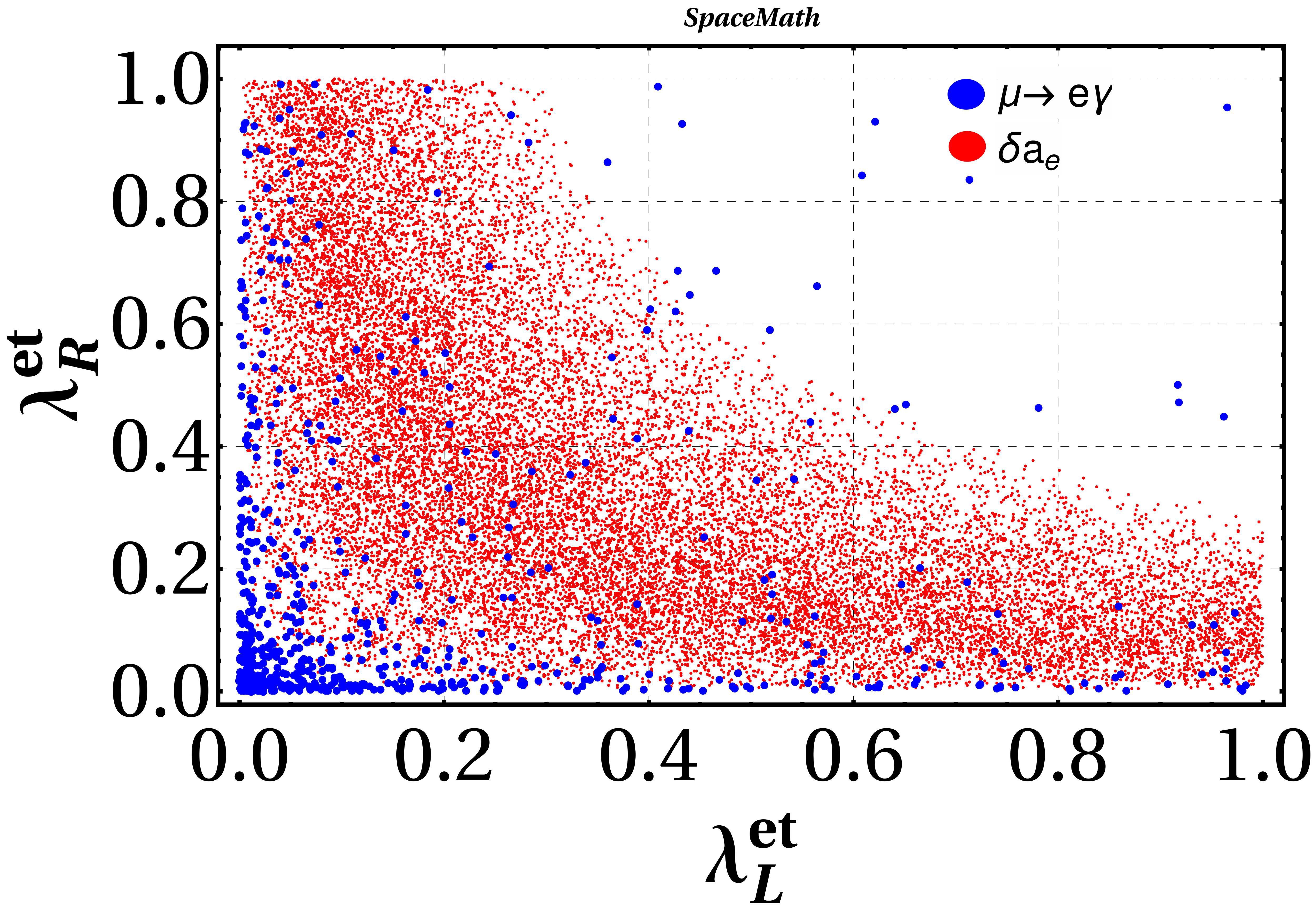
FIGURE 4 Allowed region by electron anomalous magnetic dipole moment δα e (red points) and the µ → eγ decay (blue points).
The allowed region that satisfies both δα
e
and µ → eγ is the one in which the
points overlap, and we observe that this allowed region is a combination of the
values of
4. Decay h → τµ induced via scalar leptoquarks
We now turn to present the LFV Higgs decay, which is evaluated from the Feynman diagrams shown in Fig. 5. Although the triangle diagram of Fig. 5a) has ultraviolet divergences, they are canceled out by the bubble diagrams b) and c). In this case, it turns out that the diagram with the vertex HΩ 5/3 Ω 5/3 is ultraviolet finite.
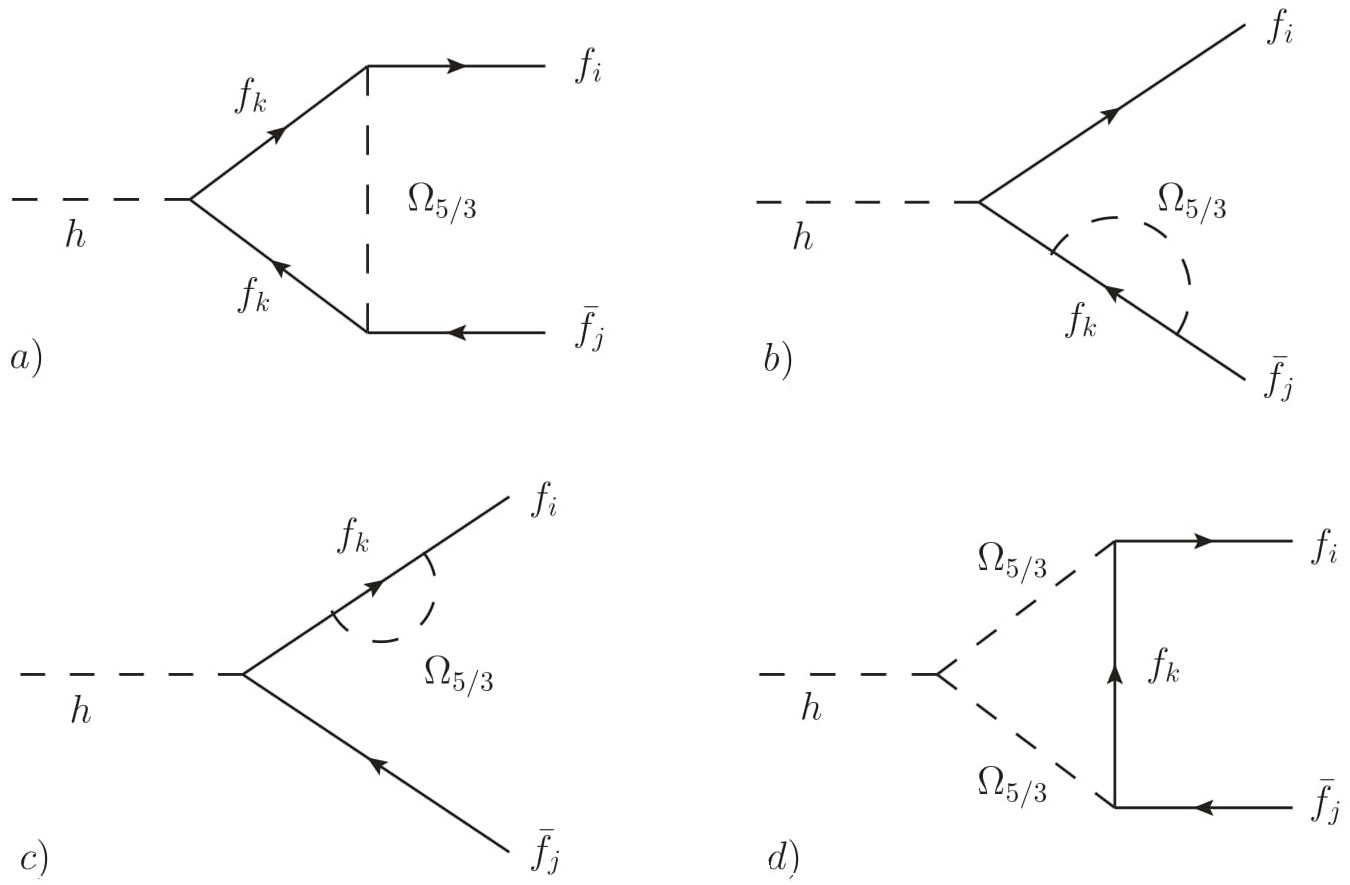
FIGURE 5 Feynman diagrams for the rare decay
Once the invariant amplitude for each Feynman diagram was written down, we used the Passarino-Veltman reduction scheme to solve the loop integrals [67], which was carried out with the implementation of the Mathematica package socalled Package-X [68]. After some algebraic simplifications, the invariant amplitude can be written in the form
where the F L and F R form factors are given in terms of Passarino-Veltman scalar functions and can be consulted in Appendix B.
After summing over the polarization of the final fermions, we introduce the average squared amplitude into the twobody decay width formula to obtain
where
4.1. Branching ratio BR(h → τµ)
Once the free model parameters involved in the decay width were constrained, we
are ready to present the
Figure 6 shows the contours of
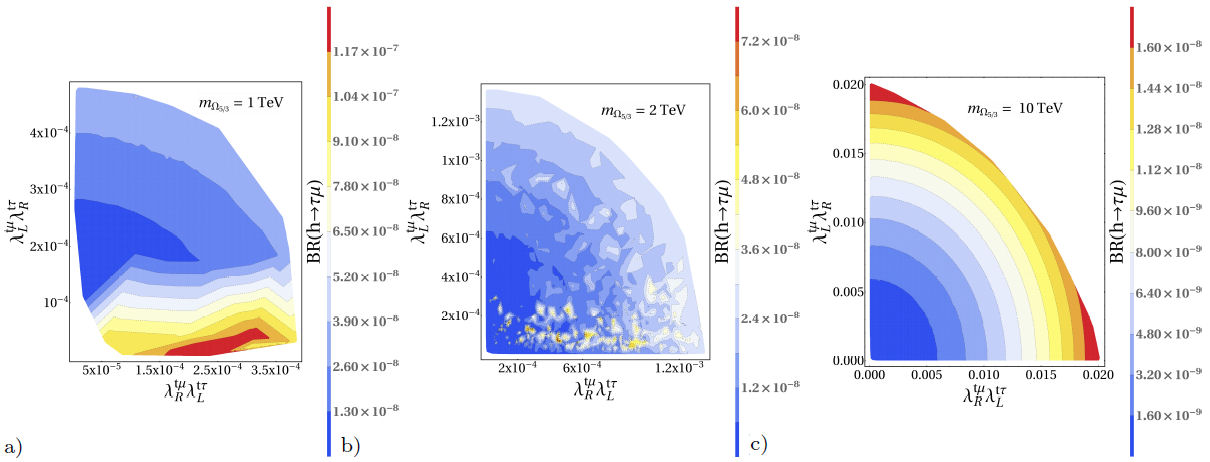
FIGURE 6 Branching ratio of the decay h →
τµ as a function of
We observe that there are regions in the
4.2. Number of signal events
Let us first explicitly mention the background and signal processes:
SIGNAL: We consider the main production mode of the Higgs boson at hadron colliders, i.e., the gluon fusion mechanism with its subsequent decay into a τµ pair:
The electron channel must contain exactly two opposite-charged leptons, namely, one electron and one muon. Therefore, we search for the final state eµ plus missing energy due to undetected neutrinos.
Table I shows the number of background events in which we consider the optimally integrated luminosities associated with each collider, namely: HL-LHC, 3 ab−1; HE-LHC, 12 ab−1; FCC-hh, 30 ab−1. We compute the cross-section of all background processes with MadGraph5 at NLO in QCD [71].
TABLE I Number of background events. In all cases we take into account the optimal integrated luminosities: HL-LHC, 3 ab−1; HELHC, 12 ab−1; FCC-hh, 30 ab−1.
| Background process |
HL-LHC | HE-LHC | FCC-hh |
| Drell-Yan | 194988300 | 1474246800 | 12337410000 |
| WW production | 5031000 | 50400000 | 503100000 |
| ZZ production | 69720 | 584400 | 10161000 |
As far as the signal is concerned, we present in Fig. 7 the number of signal events produced at the HL-LHC as a
function of
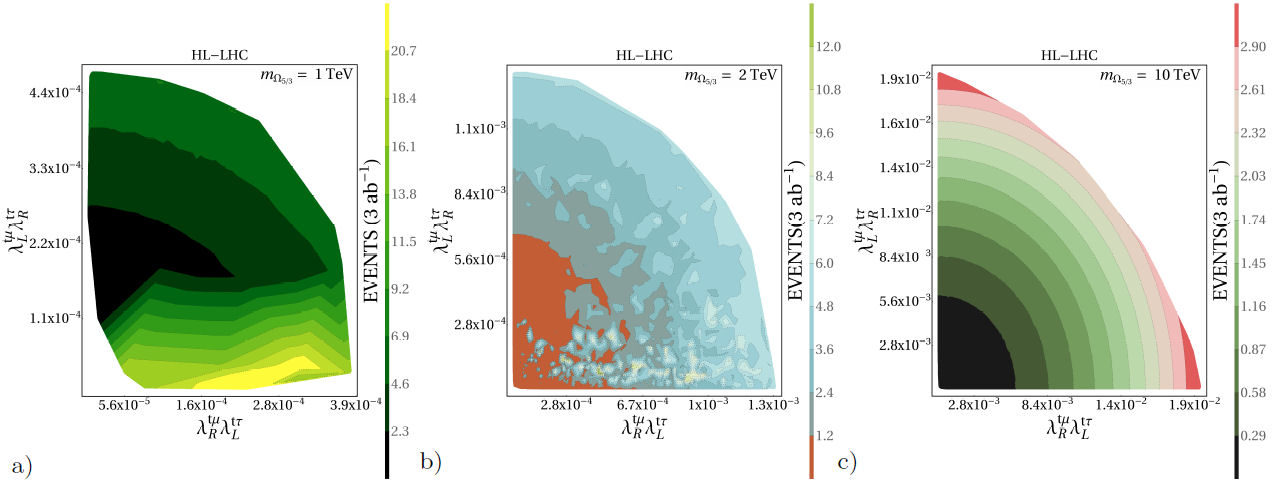
FIGURE 7 Number of signal events produced at the HL-LHC as a function of
We note that for specific regions in the
Although the branching ratio
TABLE II Kinematic cuts applied to the signal and main SM background for
the FCC-hh with a center-of-mass energy
| Cut number | Cut | NS | NB (≈) | SFCC-hh |
| Initial (no cuts) | 4230 | 1.29 × 1010 | 0.0373145 | |
| 1 | |ηe | < 1.5 | 3891 | 4.6 × 109 | 0.0572067 |
| 2 | |ηµ | < 1.5 | 3780 | 2.78 × 109 | 0.0717467 |
| 3 | 0.1 < ∆R(e, µ) | 3671 | 1.25 × 109 | 0.10387 |
| 4 | 40 < pT (e) | 3592 | 1.2 × 108 | 0.321392 |
| 5 | 50 < pT (µ) | 3422 | 8.37 × 107 | 0.374058 |
| 6 | 40 < MET | 3257 | 1.92 × 107 | 0.742309 |
| 7 | 110 < mcol(e, µ) < 140 | 3081 | 1.6 × 106 | 2.43522 |
| 8 | 25 < MT (e) | 2987 | 1.2 × 106 | 2.70744 |
| 9 | 15 < MT (µ) | 2879 | 9.2 × 105 | 2.99237 |
We observe that the main kinematic cut is the collinear mass, which is defined as:
5. Conclusions
The decay width of the LFV decay h → τµ in the context of a simple LQ model with no proton decay was calculated.
This model incorporates to the SM a SU(2) scalar LQ doublet with hypercharge Y = 7/6. In such a model a non-chiral LQ with electric charge Q = 5/3e that couples to charged leptons and up-type quarks are predicted, which contributes to the LFV decay of the Higgs boson.
As far as the analytical results are concerned, we present them in terms of Passarino-Veltman scalar functions. As for the numerical analysis, in order to have a realistic calculation, we obtained bounds on the parameter space involved in the
calculations via the most up-to-date experimental constraints on the LHC Higgs boson data, the muon and electron (g−2), the LFV radiative decays τ → µγ and µ → eγ, explaining all the processes simultaneously.
We find that for specific regions of the allowed parameter space in the











 nova página do texto(beta)
nova página do texto(beta)

